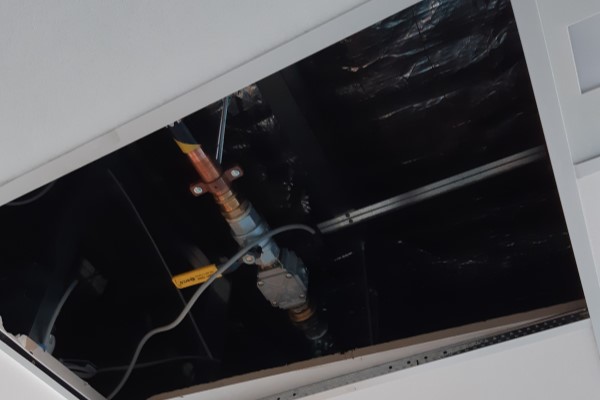Are you concealing something?
Energy Safe Victoria gas inspectors are continuing to come across incorrectly installed non-permanent joints in concealed locations other than underground or embedded in concrete. Paul Makrievski writes.
To begin, it’s important to understand why there are concerns with consumer gas piping in concealed locations. Gas consumer piping in concealed locations often remain undisturbed for long period of times, which can allow a potential gas leak to go undetected.
What is considered a concealed location? The standard doesn’t provide a definition for a concealed location, as such a definition is taken as found in the dictionary. A concealed location is one that is hidden or where it cannot easily be seen. Common examples of concealed locations include pipe riser shafts, service cupboards, ceiling spaces and wall cavities.
What does AS/NZS 5601.1:2022 Gas Installations Part 1: General installations require when gas consumer piping is concealed? Clause 5.3.8 and Table 5.3.8 provides conditions that need to be met based on pipe material and jointing methods, operating pressure and the piping accessibility when locating gas consumer piping in a concealed location.
At times, gasfitters may fall into the trap of thinking gas consumer piping isn’t concealed because it can be accessed. However, a location is still considered to be concealed even when they are accessible via an access panel or door such as when a gas consumer pipe is accessed via a ceiling hatch or sub-floor door.
It is also equally important to understand what a permanent joint means as this is referenced within Table 5.3.8 and forms part of knowing what overall compliance looks like in practice. AS/NZS 5601.1 defines a permanent joint as: “A joint that is not intended to, and cannot readily, be disassembled.”
There are also examples given for permanent joints such as brazed, welded, crimped and hydraulically or mechanically compressed joints.
As a result of the definition provided in AS/NZS 5601.1, we can thus draw the conclusion that a non-permanent joint is one that may be readily dissembled. Examples of a non-permanent joint would include any male or female thread, compression fitting, flange or barrel union. A common trap that industry find themselves in is the idea that where a quick setting thread compound is used this can transform a non-permanent joint into a permanent joint, but that is not the case.
It’s not always practical to have a permanent joint installed where gas consumer piping is concealed. There will be scenarios where concealed gas consumer piping will require to have some non-permanent joints. A common example of where this may occur is having to locate a safety shut off valve in a wall or ceiling cavity. When confronted with this scenario there are a couple of ways to achieve compliance despite these circumstances.
One simple option can be to install a sealed box (sealed to the ceiling/wall space) and having an access hatch incorporating a vent into the habitable space. This way, any potential gas escape will permeate into the habitable space and be identified by the occupants.
The second option is taken directly from AS/NZS 5601.1 and allows for the gas consumer piping to have a non-permanent joint located in the concealed location provided ventilation is provided. Ventilation needs to be provided in accordance with Clause 5.3.12, which requires permanent openings to be positioned so that they are relative to each other to provide a flow of air across the entire void (in the case of piping concealed in a duct or sleeve, the openings are to be provided at each end). Table 5.3.12 provides calculations to help determine the minimum free ventilation area of each opening required based on the cross-sectional area of the void, duct or sleeve the gas consumer pipe is located within.
Another important factor to keep in mind is when dealing with gas consumer piping with operating pressures exceeding 7kPa. When the operating pressure exceeds 7kPa, the concealed location where the gas consumer piping is located must be ventilated, all joints must be permanent and kept to a minimum, and the gas consumer piping must be accessible.
Energy Safe Victoria, in acknowledgement of the challenges that these requirements present, has published Gas information Sheet 10 to provide further guidance and support when dealing with gas consumer piping in concealed locations. It can be found on the Energy Safe Victoria website: energysafe.vic.gov.au.

